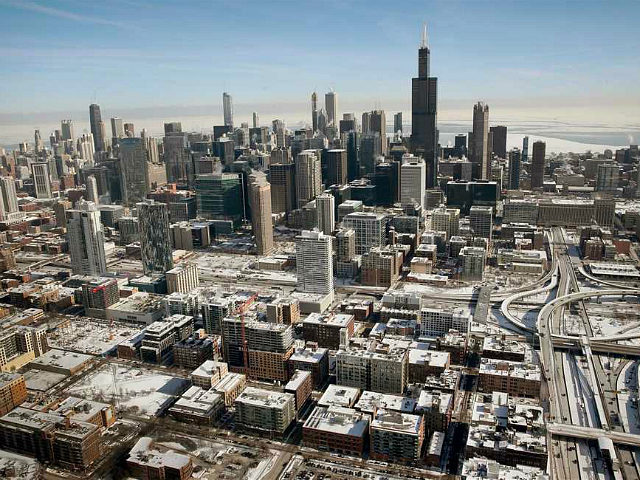The city of Chicago has lost over half its middle-class residents since 1970, replaced by lower income and poor residents — and some richer ones — as taxes rise, debt grows, and the pension crisis explodes.
A recent survey of the income classes in Chicago shows a very disturbing trend as the bulk of the city’s tax base — middle-class income earners — has fled the area to more friendly surroundings, WBEZ reported.
The review of the historical trend was conducted by the Nathalie P. Voorhees Center for Neighborhood and Community Improvement at the University of Illinois at Chicago (UIC). The UIC center found that well over half the city’s middle-class residents have totally disappeared.
In 1970, well over half the city’s neighborhoods were filled with middle-class residents. But today, that number has crashed to only 16 percent of the city’s residents hailing from that income strata.
While the city has substantially gained higher income residents in a few small regions of the city, the rest, comprising at least 75 percent of the city is now home to low or “very low” income households.
“We have two cities,” the center’s co-director, Janet Smith, said. “We have the rich, and we have the poor.”
By subscribing, you agree to our terms of use & privacy policy. You will receive email marketing messages from Breitbart News Network to the email you provide. You may unsubscribe at any time.
“For UIC to consider a census tract middle income, the average per capita income there had to fall between $28,712 and $43,068,” WBEZ wrote. “UIC researchers said per capita income is useful for mapping wealth and poverty but doesn’t necessarily represent what a person would earn. Median household income in the Chicago metro area is $68,403.”
One resident noted that some areas that were once solidly middle income quickly became poor areas once large numbers of Mexican immigrants began flooding into the city in the 1990s. And now, according to the Spanish news service Hoy, Hispanics have become the largest minority community in Chicago.
The U.S. Census reports that 803,000 thousand of the city’s 2.7 million residents now are Hispanic. That amounts to about 30 percent of the population. And that tops a shrinking black population which dwindled another 250,000 residents since the year 2000.
While the story in Chicago is being repeated in other big American cities, WBEZ noted that some of the problems of a loss of middle-income residents are “directly tied to jobs and wages.”
It does not help that, out of the top ten employers, half are government offices.
According to Crain’s Chicago, the top employer in the city is the U.S. Government. That is followed by the Chicago Public Schools, the City of Chicago, and the County of Cook. Then in seventh place is the University of Chicago and in ninth place is the State of Illinois.
As the weight of these sorts of jobs grows, both the cost of taxes and the size of the city’s bloated government also grows. That, in turn, drives up taxes and chases even more middle-class families out of the city.
Follow Warner Todd Huston on Twitter @warnerthuston.

COMMENTS
Please let us know if you're having issues with commenting.